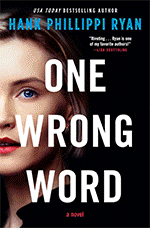LUCY BURDETTE: It’s New Year’s Eve, and I’m sure you’ve got better things to do than answer serious questions. Like get your black-eyed peas ready or drink champagne? However…you can make them quick!
1. What might you want to leave in darkness as we move into the days of more light?
2. What do you want to bring forward with you into the New Year?
My #1 would be anger and hatred and negative news. For #2, I’d like to be kinder and more patient!
Reds? Over to you!
RHYS BOWEN: last year’s health worries. We started the year with radiation and knee surgery and ended it with all those doctor appointments.
I’d like to bring forward enjoying the small things every day like the view from my balcony or my cup of tea and a good cookie in the afternoon.
JULIA SPENCER-FLEMING: I feel I’m ending the old year on a good note - my children are all healthy and happy, I have a new daughter in law that I love, I’ve been held up and helped out by friends, and I finished both the manuscript and its edits. So, leave behind? Dithering. When I need to do something, I do, and it feels so good! I want to banish the faffing about I do when I’m feeling anxious about work and, as Nike says, Just. Do. It.
Take with me into the New Year? Time spent with family and friends. In the end, that’s what it all comes down to.
HANK PHILLIPPI RYAN: Leave in darkness: The world’s dogmatic inflexibility and stupidity and cruelty. We have too much of that.
Bring forward: Good health, definitely. Optimism, confidence, and I know this is strange, but I’d love to have more…carefree fun.
HALLIE EPHRON: Leave behind? Definitely health issues. I DO NOT WANT TO GET ANOTHER BOUT OF COVID OR BIRD FLU or whatever new scourge gets unleashed.
Bring forward: Watching my grandkids do their goofy stuff and not boring other people by going on and on about it. Also finding new friends: I’m in the market for them, so watch out, and cherishing the ones I have. They’re my lifeline in these crazy times.
DEBORAH CROMBIE: Leave behind? Health issues!! This has been a one-thing-after-another year and I am more than ready to move past it! Also, enough of the all the hatred and outrage. World events may well be deserving of the outrage, but my little physical self cannot be a vehicle.
Bring forward? Doing my bit to make the world a little better, like donating to folks who actually CAN make a difference. I want to enjoy nature and my friends and family more, especially my darling granddaughter who is growing up so fast!
JENN McKINLAY: Leaving behind? Sugar (sob). My labs just came back and I'm still pre-diabetic (my numbers suddenly spiked last year and rose again this year) and I'm now teetering right on the brink of diabetes. I rarely drink alcohol, I loathe soda, I drink my coffee black, so it's my life long candy addiction that is coming for me.
Bringing forward? New activities (paddle boarding) and adventures (a research trip to London!) and enjoying art, music, nature, my family and friends, and, apparently, sugarless food and drink. LOL.
 |
| as seen in Key West |
Reds, we'd love to hear what you're leaving behind and bringing forward! We are so grateful to have you as our friends and readers!





.png)






























